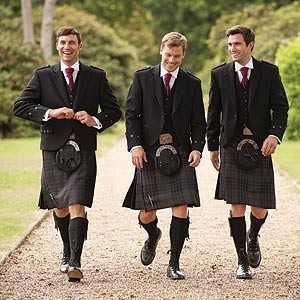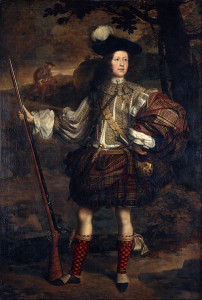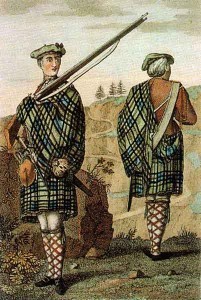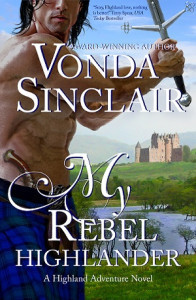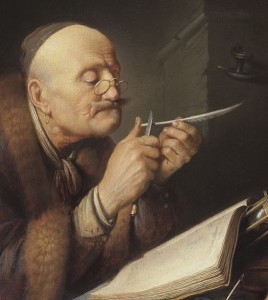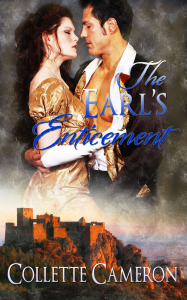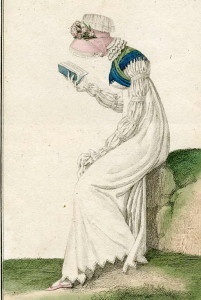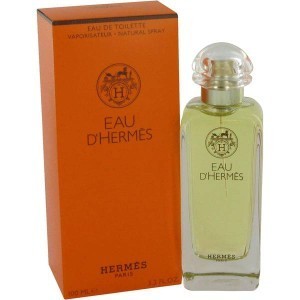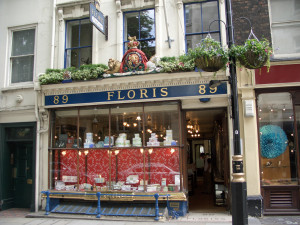L.B. Joramo's Blog, page 5
June 11, 2014
Historical Writer Jacqui Nelson shares paintings that inspired her muse
Today I have Jacqui Nelson on my blog! Besides her prose being beautiful she shares with us the beautiful paintings that have inspired her, namely by William Tylee Ranney. Click here for some music while you read and enjoy!
Thanks so much for inviting me to be your guest, Lani!
One of my favorite 19th-century painters of American frontier life is William Tylee Ranney. Born in
Middletown, Connecticut in 1813, he was the son of a sea captain. At age thirteen, he went to Fayetteville, North Carolina to work as a tinsmith’s apprentice. But seven years later, he moved to Brooklyn to study painting on his own.
Picture caption: William Tylee Ranney (age 26), self portrait, 1839
How does a self-taught painter find the spark to create vivid portrayals of frontier life?
 Picture caption: “The Scouting Party,” c. 1851
Picture caption: “The Scouting Party,” c. 1851
I believe the biggest spark for Ranney came in 1836 when he was only twenty-three.
Six days after the fall of the Alamo, Ranney volunteered to fight in the Texas War of Independence under General Sam Houston. Following Santa Anna’s capture at the Battle of San Jacinto, Ranney was reportedly one of the Mexican President’s guards.
Ranney’s nine-month tenure in the Texas Army must have provided a lifetime of inspiration for his paintings.
But where does an artist go after an adventure of a lifetime?
In 1853 when Ranney was forty, he settled with his family in the growing artist community of West Hoboken, New Jersey.
His home had a two-story, glassed-in studio that Henry T. Tuckerman described in his Book of the Artists: “It was so constructed as to receive animals; guns, pistols, and cutlasses hung on the walls; and these, with curious saddles and primitive riding gear, might lead a visitor to imagine he had entered a pioneer’s cabin or border chieftain’s hut; such an idea would, however, have been once dispelled by glance at the many sketches and studies which proclaimed that an artist, and not a bushranger, had here found a home.”
Picture caption: “Advice on the Prairie,” c. 1853
What more could an artist want?
Ranney’s home sat atop the then-rural Hudson Palisades, overlooking the Manhattan skyline. He was an avid rider with a stable full of horses that he most likely used to explore his amazing “backyard” and remind himself of life on the frontier. Things look differently on horseback….
Whether you’re just starting your adventure…
Picture caption: “Boy on Horse Fording a Stream,” c. 1853
Or maybe close to ending it…
May 28, 2014
Vonda Sinclair tells us what’s under that kilt
I’m naughty. Actually, historical fiction writer Vonda Sinclair tells all about the history of the kilt or plaid or feilidh-mor. I loved this post, as I hope you do too. Here is some music for you while you read and savor Vonda’s piece!
History of Kilts
By Vonda Sinclair
If you attend Highland Games or if you read Scottish romance novels, you’ve seen a lot of kilts, the national dress of Scotland (for men). A lot of confusion exists about kilts, what they are and when they were worn. One of the best books on the subject is Old Irish and Highland Dress by H.F. McClintock. He looks back to primary sources describing the dress of Ireland and the Scottish Highlands from Medieval times.
Some of this confusion about kilts stems from carvings from medieval times which depict the leine, the tunic and light quilted armor called cotuns in Irish Gaelic. In the 16th century in Ireland, men wore heavily pleated garments, called leinte. They were shirts that wrapped around and had wide hanging sleeves. They also had pleated skirts. But the earliest a kilt is shown to be worn Ireland is the mid 19th century. Medieval Scots didn’t wear kilts either, although a lot of people believe they did. This misconception existed even before the movie Braveheart.
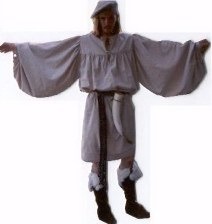
Leine
McClintock quotes a document called the Magnus Berfaet Saga. In 1093, the king travels to the Western Isles and dresses as they do there. The translation states, “They went about barelegged, having short tuics and also upper garments…” This fits in with what the Irish were wearing at the time, a leine and brat. There is no mention of a kilt nor belted plaid.
According to historical evidence, kilts were first worn in the Scottish Highlands in the late 16th century. This firstand early type of kilt is called a great kilt, great wrap (feilidh-mor), breacan-feile (tartan wrap) or belted plaid. And this is what most of the male characters in my (17th century) stories wear. It is simply a length of thick woolen fabric, usually of plaid or tartan weave. It was gathered in folds and belted around the body.
The first mention of what might be a belted plaid comes from 1578 when Bishop Leslie of Rome wrote, “Their clothing was made for use (being chiefly suited for war) and not for ornament. All, both nobles and common people, wore mantles of one sort (except that the nobles preferred those of several colors.) These were long and flowing, but capable of being neatly gathered up at pleasure into folds.” It sounds like a description or a belted plaid, although it truly doesn’t mention a belt.
Another historical document, this one from George Buchanan’s History of Scotland published in 1581 describes Highland dress: “Their ancestors wore plaids of many colors, and numbers still retain this custom but the majority now in their dress prefer a dark brown, imitating nearly the leaves of the heather, that when lying upon the heath in the day, they may not be discovered by the appearance of their clothes; in these wrapped rather than covered, they brave the severest storms in the open air, and sometimes lay themselves down to sleep even in the midst of snow.”
This shows how tough and hardy Highlanders were and explains how they used their plaids for protection from the weather and for camouflage. Again it doesn’t mention a belt, but it says it was wrapped. An unbelted plaid is considered to be a mantle or brat.
The first historical document which mentions the belted plaid is The Life of Red Hugh O’Donnell written by Lughaidh O’Clery. It is an Irish document written in Gaelic. It describes a group of mercenaries from the Hebrides of Scotland in 1594. “These were recognized among the Irish by the difference of their arms and clothing, their habits and language, for their exterior dress was mottled cloaks to the calf of the leg with ties and fastenings. Their girdles were over the loins outside the cloaks.” The girdle here probably means a belt and it is worn around the outside of the cloak. Mottled cloaks refer to plaid or tartan.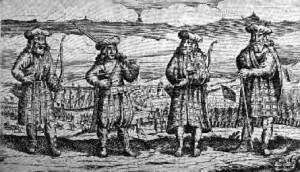
A belted plaid was about four or five yards long. Often lengths of material of 9 or 12 yards was purchased (and varying other lengths) and this narrow 25″ wide material was sown together to make it long enough to reach from above the head to the knees.
There are a lot of opinions on how to put on a belted plaid, but we actually don’t know how Highlanders put on their great kilts. They didn’t leave instructions.  All we have to go on are a few scarce descriptions of what they wore. Men probably used various methods to put them on, and they likely wore them at different lengths as this historical print from a woodcut of Scottish soldiers in 1641 shows.
All we have to go on are a few scarce descriptions of what they wore. Men probably used various methods to put them on, and they likely wore them at different lengths as this historical print from a woodcut of Scottish soldiers in 1641 shows.
The top of a great kilt (belted plaid) can be worn in many different ways, such as resembling a sash across one shoulder pinned with some sort of brooch. This is the most common way we see it worn. If it was cold out, this wool material could be unfastened from the brooch and pulled over the shoulders and head. It can also be left to hang loose and the ends tucked up into the belt at the back.
There is evidence that in the late 1600s and early 1700s the feilidh-beag (little wrap) started being worn. This is simply the bottom half of the belted plaid, with no top half sewn on. Although there is a rumor an Englishman known as Rawlinson invented this way of wearing the kilt, there is no evidence to support this. It’s likely the little wrap was worn before he had his Highland iron-smelting workers wear them.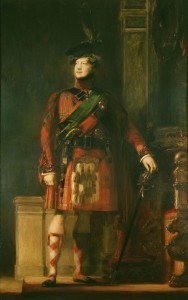
In 1792 the tailored kilt was created in which the box pleats were sewn into place. This is the first garment that can legitimately be called a kilt like is most often worn in modern times.
About the material kilts are made of, before the eighteenth century, there were no designated clan tartans. Basically, people wore whichever color, design, and weave they wanted or whatever they could get. This often depended on the natural dyes available in their area.
Thank you so much, Vonda, for all the information! For my current work in progress, I had to figure out how to undress a Highlander, and although, as Vonda points out, that there’s no instructions, thanks to YouTube I found out at least how to dress one.
Please check out Vonda’s latest book
Lastly, I won’t be posting next week. Please do me the favor of holding your loved ones extra close for me! See you in a couple weeks!
May 21, 2014
Quill and Ink Regency Style by Historical Fiction Writer Collette Cameron
Hi, all! I’d like to welcome Collette Cameron again on my blog! I’m so happy to have her here discussing how people used to write during the Regency era. My son and I love quills, and even making our ink from ancient recipes. We have a turkey and chickens who donates regularly for our hobby. We also write with invisible ink! Anyway, here is some fun music to listen to and Collette!
Quill and Ink-Writing Regency Style
By
Collette Cameron
Today I’m talking about Regency writing. No, not writing Regency romance, but actually writing with a quill. You know, a feather. What the haut ton used to write their letters, diaries, documents
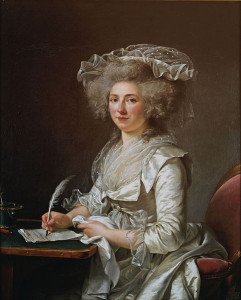
…everything.
As an author, it’s nearly impossible for me to imagine writing with a quill pen. I can barely write legibly with a fine point gel pen.
During the Regency Era, though metal nibs had been invented, they were rarely used. Quill pens were preferred and much more economical.
I had no idea that different sized quills were used for varies sized text. It makes sense. It’s not like they had a computer they could change the font size with a simple click of a mouse.
Goose feathers were a popular choice for quills. (I’ve had geese and turkeys and often wondered if their quills would have been used for writing. Both were.) The most desirable
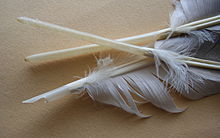
quills came from swans or peacocks. The tip of the quill (the nib) is trimmed with a knife before writing with the feather.
Why you ask? Well, how else were they to vary the thickness of the writing? I suppose this was done when one didn’t have a smaller feather sitting about.
Feathers from crows, hawks, owls, pheasants, and eagles were also used. And lest you worry about the foul from whence said feathers were obtained, molted feathers were used. No chasing unsuspecting birds about the barnyard plucking feathers from them. Feathers were sorted into three grades, primes, seconds, and pinions, according to size of the quill.
The feathers had to be hardened too. This process, called quill-dutching, was done by dipping the tip of the feather into hot sand until the outer membrane pulled away. The softened quill was then flattened and the end rounded. Another method to harden the quill was to boil the ends for a minute, and then lay them out to dry. This process was repeated on the finer quality pen, those longest and largest, several times. Hardened quills were more flexible and less brittle.
Another interesting tidbit I discovered while researching Regency writing implements was that the word pen actually comes from the Latin word penna. Want to guess what it means? You’re right: feather. I read contradicting accounts on whether left-handed people preferred feathers from the right wings and right-handed people preferred feathers from the left wing. Some sources said this was true, while others maintained it wasn’t.
I also learned that the barb, the actually feathery part of the pen, was trimmed as the nib was shortened from use. Some people cut away the barb completely before they began to use the pen. Those pictures we see of the huge plumes on the ends of quill pens?
Nope. Didn’t happen.
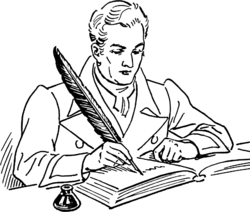
To write, the tip was dipped into an ink pot. The quill held a small amount of ink, so redipping every little bit was necessary. (I can just imagine the unholy mess I’d make.)
The ink most commonly used during the Regency era, iron gall ink, was made from oak galls, acacia gum, and iron sulfate. When first used, the ink appeared grayish but darkened considerably after exposure to air. A blotter was used to pick up excess ink. Then, the document was sprinkled with sand to speed up the drying process. If one needed to transport their quills, a metal quill case was often used.
I’m trying to picture Jane Austen writing away with her quill.
Have you ever written with a quill pen? What was it like?
References:
http://lindabanche.blogspot.com/2014/02/guest-maria-grace-on-regency-letter.html
http://janeaustensworld.wordpress.com/tag/letter-writing-in-the-regency-era/
http://en.wikipedia.org/wiki/Quill
http://regencyredingote.wordpress.com/2009/09/11/the-quill-the-regency-pen/
http://medievalwriting.50megs.com/tools/quill.htm
http://regencyredingote.wordpress.com/2009/09/18/ink-regency-writing-fluid/
All pictures courtesy of Wikimedia Commons
Check out Collette’s latest book coming soon!
May 14, 2014
Author Lois Winston and the News . . .
Hi, everyone! I’d like to welcome mystery writer Lois Winston to my blog today. She talks about making the news a muse. (Sorry for rhyming; I’ve been in one of those peppy, spring-time moods lately.) Personally, I think reading the news is a great way to get to know one’s characters, and I always try to read about the times I’m writing through newspapers or other various means. The history of newspapers spans back to the Roman times for western cultures, but even further back for eastern cultures. Like, did you know that the Han Dynasty of 202 BC to 221 AD wrote daily, hand-printed news sheets called tipoa? Amazing, right? So without further ado, here is Lois and the news . . . (Oh, and click here if you want to listen to music while you read. And here’s a great article about the history of newspapers https://www.nyu.edu/classes/stephens/Collier’s%20page.htm)
I read the newspaper every morning while I’m getting my first of many caffeine fixes of the day. Prior to owning an iPad, when I was away from home and didn’t get my daily dose of news, I’d feel like something was missing from my life. Now thanks to my New York Times, Star-Ledger, and Time apps, I can keep up with the world no matter where I am.
For me, current events are always fodder for my books. Every book I’ve ever written has incorporated real life events in some way—whether it’s an account of a murder, the hype over a bestseller, or the results of a research study. The news is always a wonderful source for plots, subplots, main characters, and secondary characters.
Incorporating events readers are familiar with not only adds a rich texture to a book, it makes the reader more a part of the story. Readers associate more with characters when they have something in common with them. That “something” can be as intimate as a shared experience or merely a love of the same baseball team. (Go Mets!)
In my Anastasia Pollack Crafting Mystery series, I draw many of my ideas from my experiences in the craft industry. However, the story lines are also influenced by what’s going on in the world. For instance, when I was writing Decoupage Can Be Deadly, the fourth book in the series, I happened to come across an article on Vajazzling. Ever hear of it? I hadn’t. But when I learned what it was, I knew I had to incorporate it into the book I was writing.
I recently finished writing Patchwork Peril, the third Anastasia Pollack mini-mystery. Anastasia lives in New Jersey, a state that sustained severe damage from Superstorm Sandy. I wanted to address the storm in some way because it’s become so much a part of who we are. A year and a half later, many people still haven’t recovered from the devastation done to their homes and their lives. In Patchwork Peril I send Anastasia’s teenage sons on a school service project to help build new homes for Sandy victims.
I know authors who don’t read newspapers and never watch the news on television. They have virtually no idea what’s going on in the world beyond their immediate environment. I don’t understand that sort of isolation from the world, especially for writers. They’re denying themselves so much rich source material. I have a three-ring binder bulging with newspaper clippings—ideas for future books. I’ll never run out of ideas, thanks to what goes on in the world every day.
Patchwork Peril
After rescuing her elderly neighbor Rosalie’s quilts from a rainstorm, craft editor Anastasia Pollack discovers Rosalie unconscious at the bottom of her basement stairs. Rosalie’s estranged niece Jane flies east to care for her during her recovery, but Rosalie suspects her motives are less than altruistic and even accuses Jane of trying to kill her. Is Rosalie’s paranoia a result of her head injury, or is there something more to her accusations? And can Anastasia uncover the truth before it’s too late?
Buy Links
Nook: http://www.barnesandnoble.com/w/patchwork-peril-lois-winston/1119313149?ean=2940149202829
Kobo: http://store.kobobooks.com/en-US/ebook/patchwork-peril
iTunes: https://itunes.apple.com/us/book/patchwork-peril/id868104007?mt=11
Bio:
Award-winning author Lois Winston writes the critically acclaimed Anastasia Pollack Crafting Mystery series featuring magazine crafts editor and reluctant amateur sleuth Anastasia Pollack. Assault With a Deadly Glue Gun, the first book in the series, received starred reviews from both Publishers Weekly and Booklist. Kirkus Reviews dubbed it, “North Jersey’s more mature answer to Stephanie Plum.” Other books in the series includes Death By Killer Mop Doll, Revenge of the Crafty Corpse, Decoupage Can Be Deadly and the ebook only mini-mysteries Crewel Intentions, Mosaic Mayhem and Patchwork Peril
Lois is also published in women’s fiction, romance, romantic suspense, and non-fiction under her own name and her Emma Carlyle pen name. Visit her at www.loiswinston.com and Anastasia at the Killer Crafts & Crafty Killers blog, www.anastasiapollack.blogspot.com. Follow everyone on Twitter: https://twitter.com/Anasleuth.
May 7, 2014
Author Ally Broadfield and Reading Books During the Regency
I’m SO excited to introduce you all to Ally Broadfield! Her post is so much fun and, as always, a bit informative too. Please welcome Ally with lots of comments. And as always, I’ve included some music you can listen to–Regency era music. Click here to listen. And now, here’s Ally!!!
Reading Books During the Regency
 I’m a librarian, an avid reader, and a writer, so books are a huge part of my life. When I start thinking about the characters for a new story, I always wonder what sort of books my heroine would read. Since I write Regencies, it’s a given that my heroines will read Jane Austen’s books. But what other contemporary books might my heroines have read?
I’m a librarian, an avid reader, and a writer, so books are a huge part of my life. When I start thinking about the characters for a new story, I always wonder what sort of books my heroine would read. Since I write Regencies, it’s a given that my heroines will read Jane Austen’s books. But what other contemporary books might my heroines have read?
I was surprised by how many female writers there were during the Regency. Anne Radcliff, a pioneer of gothic literature, had six books published just prior to and during the Regency, including her most popular novel, The Mysteries of Udolpho. Frances Burney published four novels and was known for her comic and satirical style. Mary Shelley introduced many readers to horror when Frankenstein was published in 1818.
Poetry blossomed during the Regency. Lord Byron was the most fashionable romantic poet of the period, but John Keats, William Wordsworth, and Percy Bysshe Shelley were also well known. Though William Blake went largely unrecognized during his lifetime, I like to think that there were some fans of his remarkably expressive and creative work.
What I find most interesting is that, in addition to Jane Austen’s wonderful books, many other books published during the Regency period are still popular today. Like Shelley’s Frankenstein, Radcliff’s The Mysteries of Udolpho, and Sir Walter Scott’s medieval fantasy, Ivanhoe, which was published in 1820.
I just love the mental image of my heroine curled up in the library reading one of these books. Of course, depending on when the story takes place during the Regency, not all of these books would have been available. There isn’t always an opportunity to fit reading into my stories, but knowing what sort of books my heroine would read adds another dimension to her personality.
Bio: Ally lives in Texas and is convinced her house is shrinking, possibly because she shares it with three kids, five dogs, a cat, a rabbit, and several reptiles. Oh, and her husband. She likes to curse in Russian and spends most of her time letting dogs in and out of the house and shuttling kids around. She writes historical romance set in Regency England and Imperial Russia.
Ally lives in Texas and is convinced her house is shrinking, possibly because she shares it with three kids, five dogs, a cat, a rabbit, and several reptiles. Oh, and her husband. She likes to curse in Russian and spends most of her time letting dogs in and out of the house and shuttling kids around. She writes historical romance set in Regency England and Imperial Russia.
Places you can find Ally:
Website: http://allybroadfield.com
Facebook: http://facebook.com/allybroadfield
Twitter: http://twitter.com/abroadfield
Goodreads: http://www.goodreads.com/AllyBroadfield
YouTube: https://www.youtube.com/channel/UCZZ98KE4QU__pnI5mkiWAeg/videos
Blurb for Just a Kiss:
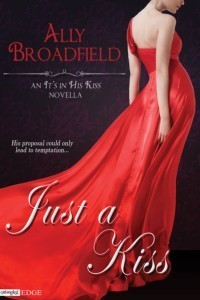
Charlotte Lightwood has one season to find a husband or she’ll be forced to marry her guardian’s loathsome cousin. With no title or dowry, she doesn’t have much hope of making a good match. Sebastian Wilkinson, the Earl of Marley, has been the most eligible bachelor on the marriage mart for more years than he cares to count and is very aware of his duty to marry a woman who will add to the wealth and stature of his title. Sebastian makes Charlotte an offer she can’t refuse: he will pretend to court her to help her attract more suitors in exchange for her advice about which ladies he should pursue. As they work together, their mutual attraction grows. When they realize they just might be perfect for one another, they must decide whether to bow to the dictates of society or follow their hearts.
Buy Links:
Amazon: http://www.amazon.com/Just-Kiss-Novella-Entangled-Edge-ebook/dp/B00JI0RS1M?tag=entangpublis-20&link_code=ur2&creative=9325&camp=211189
Barnes & Noble: http://www.barnesandnoble.com/w/just-a-kiss-ally-broadfield/1119127247
iBooks: https://itunes.apple.com/us/book/just-kiss-its-in-his-kiss/id856964058?ign-mpt=uo%3D8
Kobo: http://store.kobobooks.com/en-US/ebook/just-a-kiss-an-it-s-in-his-kiss-novella
April 30, 2014
Happy May Day!
Please watch the video.
What’s your favorite way to celebrate May Day?
April 23, 2014
Author Rayne Golay Talks about Parental Alcoholism and Child Abuse
Hi, all! This week we’re getting a bit serious, but it’s for such a good cause. I usually write or have my blog writers relate something historical. Rayne’s article is more contemporary, but let me say that child abuse does have an interesting (and awful) historical connotation. For about six months I’ve been studying the laws pertaining to wife abuse, of which many abounded from the American colonies to medieval England. (I might write about this at another time, but let me tell you it’s a hotly contested subject.) However, I cannot find one law against child abuse. Not one. Here is what one Puritanical pastor had to say about the rearing of children: “Surely there is in all children a stubbornness, and stoutness of mind arising from natural pride, which must, in the first place, be broken and beaten down; that so the foundation of their education being laid in humility and tractableness, other virtues may, in their time, be built thereon. For the beating, and keeping down of this stubbornness parents must provide carefully that the children’s ills and willfulness be restrained and repressed. Children should not know, if it could be kept from them, that they have a will of their own, but in their parents’ keeping.” (Quoted from A Little Commonwealth: Family Life in Plymouth Colony) If you’d like to, I have added music while you read Rayne’s article. Click here for it. Without further ado, here is Rayne . . .
WHEN A PARENT DRINKS, THE CHILD SUFFERS
If you are a parent who suspects alcohol is getting the better of you, consider these questions:
– Have you had the morning after drink?
- Do you envy people who can drink without getting into trouble?
- Does your drinking cause problems at home?
- Do you tell yourself you can stop any time you want although you keep getting drunk?
- Have you neglected your duties because of drinking?
- Has anybody suggested you should stop drinking?
If you answer Yes to any of these questions, alcohol may be a problem in your life.
During my many years as an addictions counselor, I’ve worked with a large number of alcoholics. They all have one misconception in common; they have the firm belief their drinking doesn’t affect anybody else. Countless times, I heard them say, “I only hurt myself.” There is a great deal of research to prove that this is not true. Alcoholism is said to be a family disease because everybody in the family system is as sick as the alcoholic. The alcoholic’s behavior and mood affect every family member as well as coworkers and friends. As alcoholism is a chronic, progressive and fatal if left untreated, it is not to be taken lightly.
The most vulnerable to the effects of an alcoholic parent are the children. The parent is the child’s first and foremost role model. When this role model dysfunctions, the effects on the child are painful to experience, heartbreaking to witness, and have far-reaching consequences. These effects may last a lifetime. The child ends up having deep-seated psychological and emotional problems. The hazardous consequences of parental alcoholism are very similar to the effects of child abuse and neglect, which are evident in my award winning novel “The Wooden Chair.” In this book, my protagonist, Leini struggles as a victim of her mother Mira’s abuse and neglect while she also suffers from Mira’s alcoholic drinking.
Not all children react to parental alcoholism in the same way. Most of them don’t know what “normal” is. They live in an insecure and unstable environment, and don’t experience a normal family relationship. Because the alcoholic parent’s behavior is unpredictable, terrifying, destabilizing, the child learns to avoid bringing friends home, not knowing if they will be met with a welcoming smile, harsh words or worse.
In my novel “The Wooden Chair,” Leini, typical of the child of an alcoholic, hasn’t learned how to have fun. In the alcoholic home, so many birthdays, holidays and family events have been ruined because the drinking parent got drunk, became argumentative, querulous and outright mean. The child is filled with shame of the parent who passes out at the dinner table, and soon learns it’s safer not to bring friends home. The family’s dysfunction becomes the heavy secret the child carries.
Most likely the child didn’t see expressions of tenderness and affection between the parents, didn’t experience it for him- or herself. Consequently, this child has trouble with intimate relationships as an adult.
Like Leini in “The Wooden Chair,” children growing up with an alcoholic parent have huge trust issues. Parents are the individuals who normally would not lie, break promises, keep secrets, but when they do, the child soon learns to be distrustful. If they cannot trust the most significant persons in their lives, how can they trust anybody going forward?
In the home with an alcoholic parent, a lot of arguing, shouting, fighting is going on in part because the parents are very angry. The child becomes skilled in recognizing an angry person, is afraid of angry people because the anger may turn on the child, resulting in both emotional and physical hurt and suffering. Having experienced disruption, arguments and fights growing up, as an adult, the child gravitates toward partners with similar behavior as the parent. The adult child of an alcoholic stays in this toxic relationship in which more suffering is the daily fare.
From a very young age, the child is guilt-ridden. It’s very obvious that something is wrong with mother or father. Because of mood swings, crying, and staying in bed because the parent isn’t feeling well, the child carries a heavy sense of responsibility that the child should be able to fix what’s wrong, to make the parent well. The child also has the misguided belief that if the parent loved the child, the parent would be healthier and happier.
Because the alcoholic parent is absent most of the time, both physically and emotionally, the child feels ignored and becomes terrified of being abandoned. When Leini was four years old in “The Wooden Chair,” Mira left her alone at a busy marketplace. Leini was lucky in that a police officer came to her rescue, but not all children are this fortunate. Alone and defenseless, the child might be abducted, kidnapped, trampled by the crowd, sexually molested.
Many children who grow up in an alcoholic home believe they are different from their peers, that they are not good enough. As a consequence, they tend to avoid social situations and are inclined to isolate.
The big and so far unresolved question is whether alcoholism is a genetically predisposed disease or an acquired way of coping with stress and difficulties because that’s what the parents did. I have encountered adult children of alcoholics who are normal social drinkers. Then there are those who started drinking in their pre-teens, following a pattern of alcoholic drinking established by their grandparents and parents.
It may seem that the outlook is very bleak for the child of an alcoholic, that he or she is doomed to an unhappy, dysfunctional, miserable life. My motto as an addictions counselor is, “I alone have to do it, but I cannot do it alone.” In “The Wooden Chair,” Leini has the option of living with the emotional and psychological scars inflicted by Mira’s neglect and alcoholism. Fortunately for herself, her future husband and children, Leini decided to heal and recover through psychotherapy. There are competent counseling therapists and psychiatrists with loads of experience who can help the adult child of an alcoholic. Self-help groups like Al-Anon for the adults and Alateen for teenagers are non profit groups whose support, love and understanding are invaluable tools to the person looking to turn his or her life around.(http://www.al-anon.alateen.org)
Rayne E. Golay holds a Masters degree in Psychology and is a certified drug and alcohol counselor. She was born in Helsinki, Finland, but has lived most of her life in Geneva, Switzerland. She wrote several books on alcohol in the work place, the troubled employee and the script to a video entitled “Something Of The Dangers That Exist.” After retirement from a multi-national company as their drug and alcohol counselor, she turned to her dream of writing. The award winning novel “The Wooden Chair” is her second book after “Life Is A Foreign Language.” Both books at Amazon, Barnes and Noble and Kobo Books to name a few outlets. Rayne now lives in Florida.
April 16, 2014
Author Angela Adams and This Holiday
Hello, everyone! I LOVE this fun, short post by Angela. I hope it gets everyone in this holiday season, ready for spring! Oh, I’m so ready for it! As always here is some music to listen to while you read through Angela’s blog. It’s a little holiday related, but mainly I miss singing this to my little one who is almost as tall as I am now. *sigh* Click here to listen. And now, here’s Angela . . .
I was at the library the other day while the librarian was holding her weekly preschool storybook class. The age group of the twelve children was a mixture of three and four-year-olds. First, the librarian read a book on Passover, followed by a book on Easter.
When she finished reading, she went around the group asking each child which “day” they celebrated in his or her house. While most of the answers were “Passover,” “Easter,” one little girl smiled and said, “I celebrate this day!”
Best wishes to all, and celebrate this day!!
Here’s a bit about Angela and her writing . . .
Angela Adams writes and reviews contemporary romances. Her work has appeared in Romance at Heart, Oysters and Chocolate, and The Long and Short Reviews. In December 2011, Whimsical Publications published an anthology, Winter Wonders. Ms. Adams’ short story “Burgers and Hot Chocolate,” was among the collection. Magic Moment is her first published novel.
Angela is a member of Romance Writers of America and the online chapters, From the Heart Romance Writers and Elements of RWA.
About Magic Moment . . .
When the FBI brings Laura Roberts – a quiet, reserved bookkeeper – in for questioning regarding activities at the warehouse where she works, an uneasy Laura resigns her job – only to be attacked by thugs.
Chase Donovan intends to spend a few peaceful days on his boat getting his head together – and finds a woman being assaulted by two men who say his father told them to do it.
Chase doesn’t want to believe his father could hurt anyone. Laura doesn’t understand why she’s a target. Can they learn to work together to discover the truth – before someone dies?
Here’s some of Angela’s links to her and to her book!
http://www.facebook.com/authorangela
http://authorangela.blogspot.com
Crimson Romance (information on Crimson webstore opening in May)
http://www.crimsonromance.com
Barnes and Noble
http://www.barnesandnoble.com/w/magic-moment-angela-adams/113004656?ean=9781440554940
April 9, 2014
A bit about . . . Me!
Hi, all! I’d like to thank Vonda Sinclair for passing on this blogging meme, “My Writing Process,” tour! I thought it was such fun. Unfortunately, so did a lot of other people, who are already signed up to continue the meme through other bloggers. So I have no one to pass the torch to. But I’ll continue to support everyone else in this fun blog tour!
As always for your enjoyment I have some of my favorite music you can listen to while you read through my post. Click here to find out one of my favorite songs and to listen. Now, here’s a bit about me . . .
What am I working on now?
Well, most of you know me as the author of the Immortal American series, paranormal historical books. Although there is romance within these books, it is not considered romance genre. However, my muse does not want to limit herself to just this series, so I’m proud to announce that I am also writing a romance series, also historical with elements of paranormal. They are time-travel novels, where Muse sisters, Clio and Erato, kidnap humans to different times and wreak havoc and a lot of love on their lives. It’s been such fun! I write this series under my penname, Red L. Jameson. Right now I’m working on polishing the first of the series, ENEMY OF MINE, as well as finishing the first draft of the second, HIGHLANDER OF MINE.
How does my work differ from others of its genre?
I hadn’t read a romance book until I was in my thirties. So I still feel a bit new to the romance genre. However, I loved it and wanted to write my own as soon as I finished my first one. Anyway, I feel I write a wee bit different, considering I have only had a few years reading the genre. Well, to be honest I feel I write a bit different from others no matter what genre I write in. I was a poet first, published by the time I was fourteen, and I’ve had an odd love affair with just words themselves at an early age. Sometimes I get a bit hung up on wordsmithing, which I hope shows in my work. In a good way, I mean. Ha!
Why do I write what I do?
Often I feel dictated by my muse to write what I do. I was happily writing the Immortal American series, getting immersed in the paranormal aspect of the books, when—BAM!—my muse wanted me to hurry up and finish to start a romance. By the time I was done editing my latest Immortal American release, I already had the plot figured out for ENEMY OF MINE. My muse works me a bit hard sometimes.
How does your writing process work?
I began writing as a pantser, writing by the seat of my pants. When a publisher wanted my first in the Immortal American series, he asked that I tell him where the series was heading. Well, gosh, that had me stumped. Sure, I kind of knew what my protagonist, Violet, was going to be doing for close to two hundred years, but how to sum that up in a synopsis? So I had to learn how to plot a bit. Now I’m a plotser, where I do a bit of plotting before hand, but I never get in the way of my muse and what she wants me to write.
Again, I’d like to thank Vonda for inviting me to the blog meme, and I’m so sorry it stops here. Well, for me it stops here, but there are many others who are writing, and I wish them the best!
So what’s your writing process?
April 2, 2014
Regency Fragrance by Collette Cameron
Hi, everyone! First I wanted to convey my thanks to the many people who have been there for me these past weeks, since my friend, Amy, passed away. With all my heart, thank you!
Now, I have Collette Cameron on my blog again! She’s writing about fragrances, which I am particularly drawn to. I’ll never forget smelling my grandmother from Washington for the first time and her Chanel No. 5. As I grew up, playing dress up entailed lots of perfume too. I’m still in love with perfumes and experiment with different scents often. However, I always use No. 5 for special occasions. For this post, I’ve inserted some relaxing yet fun music for your enjoyment. If you’d like, please click here while you read Collette’s post. And now, here’s Collette!
“Smell is a word, perfume is literature.”
Jean-Claude Ellena, perfumer to Hermès
Regency Fragrances
By
Collette Cameron
This week I found myself researching perfume and perfume bottles. I always give my Regency Era heroines a distinct fragrance, but I also try to stay period accurate. And, I don’t always want them smelling like roses or lavender, two popular scents of the period. Yes, I know lavender is soothing, but it always reminds me of sheets.
I’ve used scents that are slightly citricy, but they are always combined with another fragrance, say, Lily of the Valley or lilac.
I thought I might try to use heather, since Virtue and Valor is set in Scotland, but found that the musky scent was actually more commonly used as a base for men’s colognes.
Since I personally can’t abide the scent of violet perfume (and it reminds me of old ladies) I can’t force my heroines to dab that fragrance behind their ears even if all the other ladies of the ton are.
Jasmine is a favorite of mine, as are apple and orange blossoms. I’ve never used a spicier perfume like mint, rosemary, cloves or cinnamon based fragrances, though they were common ingredients in some nineteenth century perfumes too. Sandalwood was immensely popular with the gentlemen, and I confess, I do like the smell myself.
The art of perfume making was introduced around to Europe around the 14th century, and France became the epicenter for perfume production. Originally, only those very wealthy could afford the costly fragrances, and their use was intended to cover body odor (remember, bathing wasn’t all that popular) rather than attract the opposite sex.
It wasn’t uncommon for noble women to create their own signature scents or have one created for them. I can understand that. I’ve worn the same perfume for over twenty years, and people often tell me they know it’s me before they see me, because the can smell me coming.
I do hope they are referring to my Jessica McClintoch and not some other odor!
Floris of London, still in business by-the-way, is a well-known shop whose original owner, Juan Floris, was a barber. He began tinkering with various mixtures producing scents that were favored by Beau Brummel himself.
Perfume bottles ranged from very simple glass (even clay) with a cork stopper, silver flasks, and to incredibly elaborate cut crystal covered with vermeil overlay.
So do you have a favorite fragrance you like characters to wear? Do you have a signature perfume that you wear? Or are you someone that doesn’t like perfume at all?
Resources:
http://historicalhussies.blogspot.com/2011/04/regency-fragrancesand-what-does-she.html
http://www.janeausten.co.uk/scent-sational-regency-perfumes-and-the-man-who-made-them/
http://michellestyles.blogspot.com/2008/04/regency-scents.html
http://janitesonthejames.blogspot.com/2009/08/floris-and-scents-of-times-past.html
Watch for Collette’s latest release in May!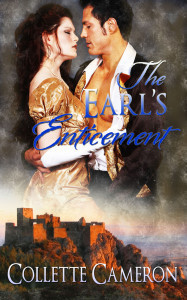
The Earl’s Enticement: (This is my May 2014 release)
She won’t be tamed.
A fiery, unconventional Scot, Adaira Ferguson wears breeches, swears, and has no more desire to marry than she does to follow society’s dictates of appropriate behavior. She trusts no man with the secret she desperately protects.
He can’t forget.
Haunted by his past, Roark, The Earl of Clarendon, rigidly adheres to propriety, holding himself and those around him to the highest standards, no matter the cost. Betrayed once, he’s guarded and leery of all women.
Mistaking Roark for a known spy, Adaira imprisons him. Infuriated, he vows vengeance. Realizing her error, she’s appalled and releases him, but he’s not satisfied with his freedom. Roark is determined to transform Adaira from an ill-mannered hoyden to a lady of refinement.
He succeeds only to discover, he preferred the free-spirited Scottish lass who first captured his heart.
Check out Collette’s other books, Highlander’s Hope and The Viscount’s Vow too! Click here for an Amazon tour of Collette’s books.




